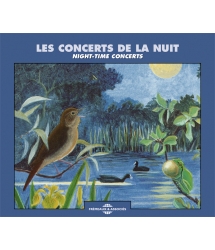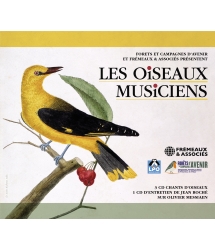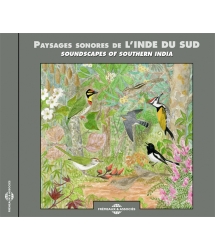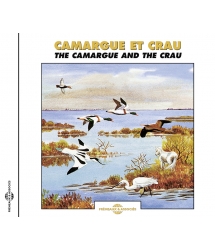- Our Catalog
- Philosophy
- Philosophers of the 20th century and today
- History of Philosophy (PUF)
- Counter-History and Brief Encyclopedia by Michel Onfray
- The philosophical work explained by Luc Ferry
- Ancient thought
- Thinkers of yesterday as seen by the philosophers of today
- Historical philosophical texts interpreted by great actors
- History
- Books (in French)
- Social science
- Historical words
- Audiobooks & Literature
- Our Catalog
- Jazz
- Blues
- Rock - Country - Cajun
- French song
- World music
- Africa
- France
- Québec / Canada
- Hawaï
- West Indies
- Caribbean
- Cuba & Afro-cubain
- Mexico
- South America
- Tango
- Brazil
- Tzigane / Gypsy
- Fado / Portugal
- Flamenco / Spain
- Yiddish / Israel
- China
- Tibet / Nepal
- Asia
- Indian Ocean / Madagascar
- Japan
- Indonesia
- Oceania
- India
- Bangladesh
- USSR / Communist songs
- World music / Miscellaneous
- Classical music
- Composers - Movie Soundtracks
- Sounds of nature
- Our Catalog
- Youth
- Philosophy
- News
- How to order ?
- Receive the catalog
- Manifesto
- Dictionnary











- Our Catalog
- Philosophy
- Philosophers of the 20th century and today
- History of Philosophy (PUF)
- Counter-History and Brief Encyclopedia by Michel Onfray
- The philosophical work explained by Luc Ferry
- Ancient thought
- Thinkers of yesterday as seen by the philosophers of today
- Historical philosophical texts interpreted by great actors
- History
- Books (in French)
- Social science
- Historical words
- Audiobooks & Literature
- Our Catalog
- Jazz
- Blues
- Rock - Country - Cajun
- French song
- World music
- Africa
- France
- Québec / Canada
- Hawaï
- West Indies
- Caribbean
- Cuba & Afro-cubain
- Mexico
- South America
- Tango
- Brazil
- Tzigane / Gypsy
- Fado / Portugal
- Flamenco / Spain
- Yiddish / Israel
- China
- Tibet / Nepal
- Asia
- Indian Ocean / Madagascar
- Japan
- Indonesia
- Oceania
- India
- Bangladesh
- USSR / Communist songs
- World music / Miscellaneous
- Classical music
- Composers - Movie Soundtracks
- Sounds of nature
- Our Catalog
- Youth
- Philosophy
- News
- How to order ?
- Receive the catalog
- Manifesto
- Dictionnary
CICADAS AND CRIKETS
FREMEAUX & ASSOCIES
Ref.: FA663
Author : 23|130
Artistic Direction : JEAN ROCHE
Label : Frémeaux & Associés
Total duration of the pack : 1 hours 14 minutes
Nbre. CD : 1
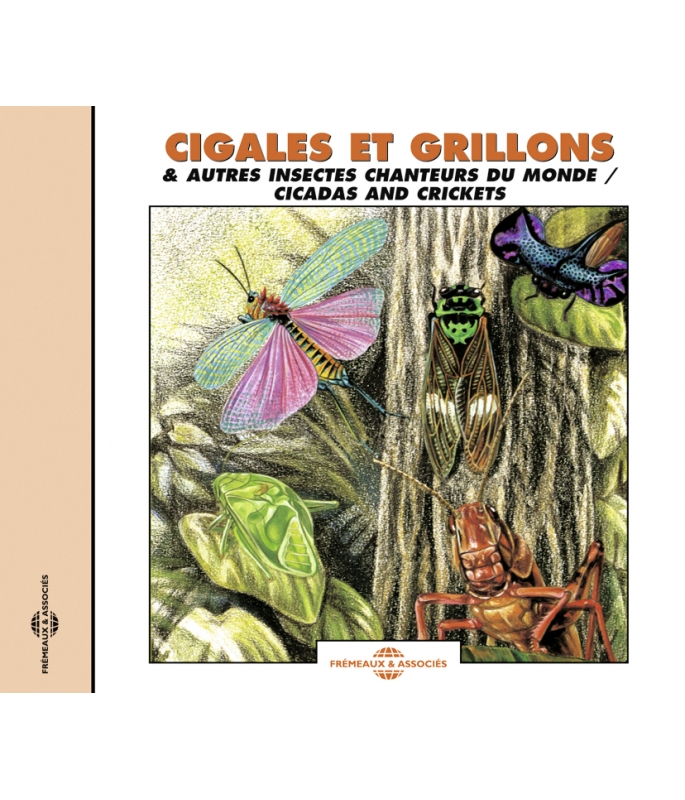
CICADAS AND CRIKETS
CICADAS AND CRIKETS
“On this CD are the songs of more than 60 species of Crickets, Cicadas and other singing insects, as well as insects from very different parts of the world. The listener will discover the incredible variety of rhythm and tone given by these small animals during their “courtship songs”. Male insects have indeed developed, during their evolution, fantastic sound communications intended to seduce and win other females, presented in more than 70 minutes in this CD. ” Patrick Frémeaux
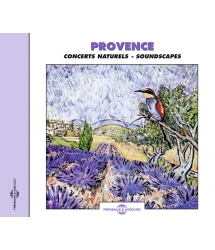
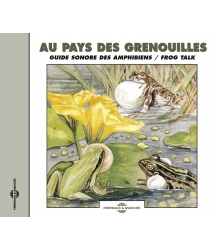
FROG TALK - GUIDE SONORE DES AMPHIBIENS
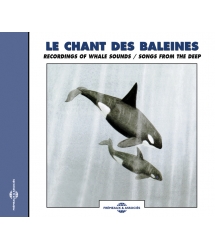
SONGS FROM THE DEEP - RECORDINGS OF WHALE SOUNDS
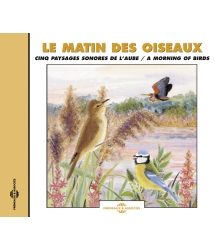
A MORNING OF BIRDS





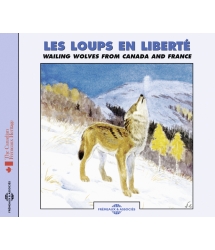
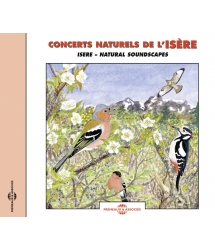
-
PisteTitleMain artistAutorDurationRegistered in
-
1Borneo Tanjung Baluran, en Savane (Borneo Tanjung Baluran, Savana)Jean Roché, Jean ThévenetJean Roché00:00:371999
-
2Thailande Parc National de Khao Yai, de nuit 1 (Thailand Khao Yai National Park, at night 1)Jean Roché, Jean ThévenetJean Roché00:00:401999
-
3Thailande Parc National de Khao Yai, de nuit 2 (Thailand Khao Yai National Park, at night 2)Jean Roché, Jean ThévenetJean Roché00:00:151999
-
4Thailande Parc National de Khao Yai, de nuit 3 (Thailand Khao Yai National Park, at night 3)Jean Roché, Jean ThévenetJean Roché00:00:261999
-
5Australie Lac Barine, de Nuit, en lisière de Forêt (Australia Barine Lake, at night, at the forest edge)Jean Roché, Jean ThévenetJean Roché00:00:251999
-
6Cameroun près de Douala, de nuit, en Savane 1 (Cameroon near Douala, at night, savana 1)Jean Roché, Jean ThévenetJean Roché00:00:381999
-
7Cameroun près de Douala, de nuit, en Savane 2 (Cameroon near Douala, at night, savana 2)Jean Roché, Jean ThévenetJean Roché00:00:291999
-
8Cameroun près de Douala, de nuit, en Savane 3 (Cameroon near Douala, at night, savana 3)Jean Roché, Jean ThévenetJean Roché00:00:391999
-
9Cameroun près de Douala, de nuit, en Savane 4 (Cameroon near Douala, at night, savana 4)Jean Roché, Jean ThévenetJean Roché00:00:331999
-
10Sénégal près d'Oukoute, au crépuscule, en Palmeraie (Sénégal near Oukoute, at dawn, in a palm grove)Jean Roché, Jean ThévenetJean Roché00:00:351999
-
11Martinique, de nuit, en lisière de forêt (Martinique, at night, at the forest edge)Jean Roché, Jean ThévenetJean Roché00:00:451999
-
12Ile de La Réunion Cirque de Cilaos, début de Nuit 1 (Reunion island, Cirque de Cilaos, nightfall 1)Jean Roché, Jean ThévenetJean Roché00:00:401999
-
13Ile de La Réunion Cirque de Cilaos, début de Nuit 2 (Reunion island, Cirque de Cilaos, nightfall 2)Jean Roché, Jean ThévenetJean Roché00:00:361999
-
14Ile de la Réunion Rivière St Etienne, de nuit (Réunion island St Etienne river, at night )Jean Roché, Jean ThévenetJean Roché00:00:271999
-
15Ile de la Réunion, près de Pavillon, au Crépuscule (Réunion island near Pavillon, at night )Jean Roché, Jean ThévenetJean Roché00:00:331999
-
16Ile de la Réunion près de Peter Both (Reunion island near Peter Both)Jean Roché, Jean ThévenetJean Roché00:00:251999
-
17France, Bugey, fin avril, de nuit (France, Bugey, end of April, at night)Jean Roché, Jean ThévenetJean Roché00:01:041999
-
18France, Bugey, de nuit, à la fin août (France, Bugey, at night, in mid August 1)Jean Roché, Jean ThévenetJean Roché00:01:221999
-
19France, Bugey, de nuit, à la mi-août (France, Bugey, at night, in mid August 2)Jean Roché, Jean ThévenetJean Roché00:01:011999
-
20France, Bugey, tard dans la nuit (France, Bugey, late at night)Jean Roché, Jean ThévenetJean Roché00:00:331999
-
21Nord du Vénézuéla, de jour, en forêt équatoriale (Northern Venezuela, in the day, in equatorial forest)Jean Roché, Jean ThévenetJean Roché00:01:241999
-
22Ile de la Réunion Rivière St Etienne, de nuit 2 (Réunion island St Etienne river, at night 2)Jean Roché, Jean ThévenetJean Roché00:01:051999
-
23Martinique Forêt proche de Fort de France (Martinique Forest near Fort de France)Jean Roché, Jean ThévenetJean Roché00:00:291999
-
24France Drôme, près de Crest, de Nuit (France Drôme, near Crest, at night)Jean Roché, Jean ThévenetJean Roché00:00:311999
-
25France Bugey, sur la Montagne du Grand Colombier 1 (France Bugey, on the Grand Colombier mountain 1)Jean Roché, Jean ThévenetJean Roché00:00:301999
-
26France Bugey, sur la Montagne du Grand Colombier 2 (France Bugey, on the Grand Colombier mountain 2)Jean Roché, Jean ThévenetJean Roché00:00:321999
-
27Tunisie du sud Oasis de Chemsa, de Nuit, en palmeraie (Southern Tunisia, Chemsa Oasis, at night)Jean Roché, Jean ThévenetJean Roché00:00:361999
-
28Ile de la Réunion, Matarum, de nuit (Reunion island, Matarum, at night)Jean Roché, Jean ThévenetJean Roché00:00:521999
-
29Nord de l'Australie, Lac Barine, de nuit (Northern Australia, Barine lake, at night)Jean Roché, Jean ThévenetJean Roché00:00:371999
-
30Cameroun, près de Douala, de nuit, en Savane 5 (Cameroon near Douala, at night, savana 5)Jean Roché, Jean ThévenetJean Roché00:00:361999
-
31Chine, Mont Omei Setchouan, de nuit, dans l'herbe (Chine, Omei Setchouan Mount, at night, in the grass)Jean Roché, Jean ThévenetJean Roché00:00:311999
-
32France Haute Provence, dans une vigne, de nuit (France Haute Provence, in a vineyard at night)Jean Roché, Jean ThévenetJean Roché00:00:501999
-
33France Haute Provence, trois espèces chantent (France Haute Provence, three singing species)Jean Roché, Jean ThévenetJean Roché00:00:471999
-
34Chine, Mont Omei Setchouan, de jour 1 (Chine, Omei Setchouan Mount, during the day 1)Jean Roché, Jean ThévenetJean Roché00:02:071999
-
35Chine, Mont Omei Setchouan, de jour 2 (Chine, Omei Setchouan Mount, during the day 2)Jean Roché, Jean ThévenetJean Roché00:00:251999
-
36Indonésie Philippines, de jour, sur un arbre (Indonésia Philippines, during the day, on a tree)Jean Roché, Jean ThévenetJean Roché00:00:191999
-
37Malaisie Parc de Taman Negara, de jour, en forêt 1 (Malaisia Taman Negara Park, during the day, in the forest 1)Jean Roché, Jean ThévenetJean Roché00:01:251999
-
38Malaisie Parc de Taman Negara, de jour, en forêt 2 (Malaisia Taman Negara Park, during the day, in the forest 2)Jean Roché, Jean ThévenetJean Roché00:00:561999
-
39Malaisie Parc de Taman Negara, de jour, en forêt 3 (Malaisia Taman Negara Park, during the day, in the forest 3)Jean Roché, Jean ThévenetJean Roché00:00:371999
-
40Thaïlande Parc de Khao Yai, de jour, en Forêt (Thaïlande Khao Yai Park, during the day, in the forest)Jean Roché, Jean ThévenetJean Roché00:00:301999
-
41Iles Célèbes, de jour, en forêt 1 (Celebes Islands, during the day, in the forest 1)Jean Roché, Jean ThévenetJean Roché00:00:351999
-
42Iles Célèbes, de jour, en forêt 2 (Celebes Islands, during the day, in the forest 2)Jean Roché, Jean ThévenetJean Roché00:01:391999
-
43Iles Célèbes, de jour, en forêt 3 (Celebes Islands, during the day, in the forest 3)Jean Roché, Jean ThévenetJean Roché00:00:291999
-
44Iles Célèbes, de jour, en forêt 4 (Celebes Islands, during the day, in the forest 4)Jean Roché, Jean ThévenetJean Roché00:01:231999
-
45Ile de Bornéo, de jour, en forêt (Ile de Borneo, during the day, in the forest )Jean Roché, Jean ThévenetJean Roché00:03:051999
-
46Venezuela, de jour, en Forêt 1 (Venezuela, during the day, in the forest 1)Jean Roché, Jean ThévenetJean Roché00:00:501999
-
47Venezuela, de jour, en Forêt 2 (Venezuela, during the day, in the forest 2)Jean Roché, Jean ThévenetJean Roché00:01:371999
-
48Venezuela, de jour, en Forêt 3 (Venezuela, during the day, in the forest 3)Jean Roché, Jean ThévenetJean Roché00:01:211999
-
49Venezuela, de jour, en Forêt 4 (Venezuela, during the day, in the forest 4)Jean Roché, Jean ThévenetJean Roché00:00:441999
-
50Marécages d'Irian Jaya, en fin d'après-midi 1 (Irian Jaya marshes, at the end of the day 1)Jean Roché, Jean ThévenetJean Roché00:00:401999
-
51Marécages d'Irian Jaya, en fin d'après-midi 2 (Irian Jaya marshes, at the end of the day 2)Jean Roché, Jean ThévenetJean Roché00:01:551999
-
52Guyane Francaise St Ali, lever de soleil (French Guyana St Ali, sunrise)Jean Roché, Jean ThévenetJean Roché00:03:511999
-
53Senegal Pres d'Ousouge, milieu de nuit, en Forêt (Sénégal near Ousouge, middle of the night, in forest)Jean Roché, Jean ThévenetJean Roché00:03:391999
-
54Au Gabon, en Forêt, avant le Lever du soleil 1 (Gabon, in forest, before the sunrise 1)Jean Roché, Jean ThévenetJean Roché00:05:081999
-
55Au nord du Cameroun, de nuit, dans la savane (Northern Cameroun, at night, savana)Jean Roché, Jean ThévenetJean Roché00:01:421999
-
56Au Gabon, en Forêt, avant le Lever du soleil 2 (Gabon, in forest, before the sunrise 2)Jean Roché, Jean ThévenetJean Roché00:01:341999
-
57Au Gabon, en Forêt, avant le Lever du soleil 3 (Gabon, in forest, before the sunrise 3)Jean Roché, Jean ThévenetJean Roché00:06:041999
-
58Sumatra, en région boisée, au crépuscule (Sumatra, in a wooded area at dawn)Jean Roché, Jean ThévenetJean Roché00:05:051999
-
59Martinique, environs de Fort de France, de nuit (Martinique, around Fort de France, at night)Jean Roché, Jean ThévenetJean Roché00:01:391999
-
60Ile de Bornéo, de Jour, en Forêt (Borneo Island, during the day, in forest)Jean Roché, Jean ThévenetJean Roché00:03:081999
Cigales et Grillons
Cigales et Grillons
& autres Insectes Chanteurs du Monde / Cicadas and Crickets
Cigales et grillons
Introduction
Ce CD vous fera découvrir la richesse sonore inouïe des chants d’insectes de notre planète Terre. Il contient une soixantaine d’exemples de chants de cigales, de grillons, de sauterelles ou de courtilières enregistrés sur les 5 continents, de jour ou de nuit, en toutes saisons. Notre oreille, habituée aux stridulations des insectes européens, s’étonne de la beauté et de l’étrangeté des rythmes et des timbres émis par les insectes tropicaux. On retrouve aussi quelques chants qui nous semblent familiers, car certaines familles d’insectes ont conquis le monde entier. L’urbanisation, la pollution et la déforestation entraînent une chute rapide de la biodiversité, surtout dans les régions tropicales. Certains concerts d’insectes que nous vous présentons ici risquent de ne plus exister dans un avenir proche. L’enregistrement des insectes est techniquement très difficile. Pour ceux que cela intéresse, nous signalons les enregistrements réalisés en numérique par un (N), et ceux réalisés en analogique par un (A).
Avertissement
Chacun de nous entend les insectes à sa façon, selon son acuité auditive. Les plages de ce CD sembleront être d’un niveau sonore égal à l’oreille d’un enfant. Un adulte de 40 ans entendra probablement moins bien les chants d’insectes aigus, qui lui sembleront enregistrés à niveau trop faible. Ce qui n’est pas le cas. Enfin, certains passages comportant des chants très aigus (au-dessus de 12 000 Hz) seront inaudibles pour certaines personnes âgées de plus de 50 ans (nous les avons signalés dans le texte par la mention “très aigu”). Malgré tout, l’ensemble du CD forme une suite de solistes ou de concerts d’une grande musicalité et accessibles à toutes les oreilles, même si l’extrême aigu échappe parfois.
Quelques explications
Sauterelles et grillons : ces insectes émettent leurs chants en frottant leurs élytres l’une contre l’autre. Les élytres étaient à l’origine des ailes qui se sont adaptées et spécialisées, au cours de l’évolution, en instrument de stridulation. Les chants des grillons sont en général assez doux et émis sur un rythme régulier. Les stridulations des sauterelles sont souvent continuelles ou en phrases assez longues, et, chez beaucoup d’espèces, elles dépassent dans l’extrême aigu les capacités de l’oreille humaine, étant émises partiellement ou totalement dans le domaine des ultrasons. En général les grillons ne peuvent pas voler, alors que les sauterelles sont capables de vols plus ou moins longs.
Criquets : on confond souvent criquets et sauterelles, bien que des différences existent, notamment au niveau des organes de chant. En effet, les criquets ne frottent pas leurs élytres l’une contre l’autre, mais ils stridulent en frottant leurs pattes contre leur corps. Souvent de grande taille, les criquets sont capables de voler sur des dizaines de kilomètres, voire des centaines. Ils attaquent les cultures pour se nourrir, formant d’immenses bandes de plusieurs milliers, voire millions, d’individus (criquets pèlerins). Les criquets font l’objet en Afrique et dans d’autres régions d’une lutte à grande échelle qui tend à les éliminer.
Courtilières : les courtilières vivent sous terre où elles creusent des galeries à la manière des taupes. Elles stridulent souvent, le soir, à l’aide de leurs courtes élytres, au fond de leur terrier à double entrée dont la galerie fait caisse de résonance. Leur chant est continu et relativement grave. Les Courtilières sont détruites avec acharnement par les cultivateurs et ont presque disparu de certaines régions de France, sauf du Midi.
Cigales : les larves des cigales vivent dans des galeries, sous terre, en suçant la sève des racines des arbres. Chez nous, l’éclosion des adultes a lieu dès les premières grosses chaleurs de juin, et ils meurent dès que le temps se rafraîchit, fin août. Les cigales chantent toujours aux heures chaudes et ensoleillées. Leur chant est émis par un organe très spécial, qui se compose de milliers de fibres rigides placées devant une cavité faisant caisse de résonance, de chaque côté de l’abdomen. C’est le fléchissement brusque des fibres, sous la pression de l’abdomen, qui provoque le son ! La puissance du chant est étonnante car le son est amplifié par les 2 cavités qui sont invisibles, cachées sous les ailes, mais qui prennent en volume environ les 2/3 de l’abdomen. Certaines espèces de cigales sont les insectes les plus bruyants au monde.
Concerts d’insectes : nous vous proposons dans cette dernière partie du CD des concerts où plusieurs espèces d’insectes chantent en même temps.
Contenu du CD avec ses 60 index
Sauterelles et grillons
1. Bornéo, Tanjung Baluran, juillet 92, en savane. Oiseaux au second plan. (N)
2. Thaïlande, Parc National de Khao-Yai, février 76, de nuit dans l’herbe. (A)
3. Thaïlande, Parc de Khao-Yai, février 76, de nuit dans l’herbe. Grenouilles au second plan. (A)
4. Thaïlande, Parc de Khao-Yai, février 76, de nuit dans l’herbe. Grenouilles au second plan. (A)
5. Australie, Lac Barine, septembre 74, de nuit en lisière de forêt. Ce chant ressemble à celui d’un batracien. (A)
6. Cameroun, près de Douala, juin 71, de nuit en savane. Autres insectes au second plan. (A)
7. Cameroun, près de Douala, juin 71, de nuit, en savane. Chèvres et villageois au second plan. (A)
8. Cameroun, près de Douala, juin 71, de nuit, en savane. Autres insectes au second plan. (A)
9. Cameroun, près de Douala, juin 71, de nuit, en savane. (A)
10. Sénégal, près d’Oukoute, août 92, au crépuscule en palmeraie.
11. Martinique, en janvier 69, de nuit en lisière de forêt. Sur le même plan, sons de clochettes des petites grenouilles martiniquaises. (A)
12. Île de la Réunion, Cirque de Cilaos à 1 300 mètres, février 98, début de nuit dans une bananeraie. (N)*
13. Île de la Réunion, Cirque de Cilaos à 1 300 mètres, février 98, en début de nuit dans l’herbe ligneuse. Au second plan, même insecte qu’en 12. (N)*
14. Île de la Réunion, Rivière-St-Etienne, de nuit à basse altitude, décembre 97, dans l’herbe haute et sèche. Autres insectes au second plan. (N)*
15. Île de la Réunion près de Pavillon à 400 mètres d’altitude, février au crépuscule dans l’herbe et les buissons. (N)*
16. Île de la Réunion près de Peter-Both, de nuit à 900 mètres d’altitude, février 98 dans les grandes herbes au bord de la route. Au second plan, un chien et la rumeur d’un village. (N)*
17. France, Bugey, fin avril 98 de nuit, Grillons champêtres. Noter le rythme irrégulier ou hésitant. (N)*
18. France, Bugey, de nuit à la mi-août, Grillons d’Italie. Ce grillon chante de juillet à octobre, uniquement la nuit.*
19. Même endroit, même heure. Une sauterelle Conocéphale gracieux se met à chanter avec les Grillons d’Italie, ainsi qu’une Grande sauterelle verte, audibles seulement pour les bonnes oreilles. (N)* - (très aigu)
20. Même endroit, plus tard dans la nuit. Le micro pointé vers le sol révèle un chant très ressemblant à celui du Grillon d’Italie. On peut l’entendre seulement dans les bois, à moins d’un mètre de distance, mais presque toute l’année. (N)*
21. Nord du Venezuela, mai 72, de jour, en forêt équatoriale. Des cigales plus graves sont bien présentes. (A)
22. Au nord du Cameroun, mai 71, de nuit, dans les herbes de la savane. Autres insectes au second plan. (A)* - (très aigu)
23. Île de la Réunion, Rivière-St-Etienne, décembre 97, début de nuit, dans les grandes herbes ligneuses. Audible seulement pour les bonnes oreilles ! Grillons au second plan. (N)* - (très aigu)
24. Martinique, forêts proches de Fort-de-France…
25. France, Drôme près de Crest, septembre 98 de nuit. Chant d’une Grande sauterelle verte. Grillons d’Italie au second plan. (N)* - (très aigu)
Criquets
26. Criquet jacasseur, France, Bugey à 1 400 mètres sur la montagne du grand Colombier, une après-midi de la mi-août. On entend aussi ses vols, et des bourdons et des abeilles qui butinent. (N)* - (très aigu)
27. France, Bugey, au même endroit, un Criquet de la palène. Sur fond de sonnailles de vaches, de bourdons et d’abeilles. (N)* - (très aigu)
Courtilières
28. Tunisie du Sud, oasis de Chemsa, février 99, de nuit en palmeraie. Au second plan le chant du crapaud africain et bruit de voix de l’oasis. (N)
29. Île de la Réunion, Matarum à 1 300 mètres d’altitude, novembre 97, de nuit, dans une plantation d’arachides. (N)*
30. Nord de l’Australie, Lac Barine, septembre 73, de nuit. (A)
31. Cameroun près de Douala, juin 71, de nuit, en savane. (A)
32. Chine, Mont Omei, Setchouan, mai 81, de nuit dans l’herbe. (A)
33. France, Haute-Provence, dans une vigne de nuit, une courtilière des vignes ; au second plan un Phanéroptère méridional. (N)*
Cigales
34. France, Haute-Provence, 3 espèces chantent ensemble : la cigale commune et la cigale grise, plus une troisième cigale non-identifiée chantant en continu, mais moins audible. (très aigu)
35. Chine, Setchouan, Mont Omei, mai 81, de jour sur un arbre. (A)
36. Chine, Setchouan, Mont Omei, mai 81, de jour sur un arbre. (A) - (très aigu)
37. Indonésie, Philippines, février 93, de jour sur un arbre. Chants de cigales surpuissants, impossible de tenir une conversation à quelques mètres des insectes. Chants d’oiseaux au second plan. (N)
38. Malaisie, Parc de Taman Negara, mars 77, de jour en forêt. (A)
39. Malaisie, Parc de Taman Negara, mars 77, de jour en forêt. (A)
40. Malaisie, Parc de Taman Negara, mars 77, le soir en forêt. D’autres cigales au loin. (A) - (très aigu)
41. Thaïlande, Parc de Khao-Yai, février 76, de jour en forêt. (A)
42. Îles Célèbes, printemps 93, de jour en forêt. (N)
43. Îles Célèbes, printemps 93, de jour en forêt. (N)
44. Îles Célèbes, printemps 93, de jour en forêt. Cigales et un bourdon au loin. (N) - (très aigu)
45. Îles Célèbes, printemps 93, de jour en forêt. Chant d’un pigeon au second plan. (N)
46. Îles de Bornéo, été 92, de jour en forêt. Chant d’un couple de singes gibbons au loin. (N)
47. Îles de Bornéo, été 92, de jour en forêt. Chant d’oiseaux au second plan. (N)
48. Venezuela, mai 72, de jour en forêt. (A)
49. Venezuela, mai 72, de jour en forêt. On entend en réalité ici plusieurs cigales qui ont complètement synchronisé leurs chants, ce qui en augmente la portée. (A)
50. Venezuela, mai 72, de jour en forêt. Avec un tambourinage de Pic. (A)
51. Venezuela, février 98, de jour en forêt. Chants d’oiseaux bien présents. (N)
Concerts d’insectes
52. Marécages d’Irian-Jaya, mars 97, en fin d’après-midi. Sauterelles, courtilières et cigales. Concert en 2 parties, la seconde plus près du ruisseau, avec des chants de grenouilles. (N) - (très aigu)
53. Marécages d’Irian-Jaya, mars 97, en fin d’après-midi. Une cigale domine le concert. Chants d’oiseaux bien présents et bruits d’un ruisseau. (N)
54. Guyane française, avril 97, lever du soleil en forêt sur la piste de St Ali. Chants d’oiseaux au second plan. (N) - (très aigu)
55. Sénégal près d’Ousouge, août 92, milieu de nuit en forêt. Vol d’un moustique au second plan. (N)
56. Au Gabon, mars 95, en forêt avant le lever du soleil. Chant d’un coq de pagode au second plan. (N)
57. Au Gabon, même lieu même jour, pendant le lever du soleil. Un barbu semble battre la mesure. (N)
58. Au Gabon, même lieu même jour, après le lever du soleil. L’intérêt de ces trois concerts est d’avoir été pris à la même place, dans la même heure. Les changements sont bien perceptibles. Chant d’un Cossyphe à la fin. (N)
59. Sumatra en région boisée, été 92, au crépuscule. (N)
60. Martinique, janvier 69, environs de Fort-de-France, mixage d’enregistrements faits dans la campagne de nuit. Parmi ces insectes, au début le “Forgeron”, qui émet des sons brefs et réguliers d’enclume, et vers la fin le “Gratte-calebasse” qui produit des sortes de grattements (c’est un criquet). (A)
Jean THÉVENET
Mens, le 15 juin 1999
© 1999 SITTELLE – 2008 FRÉMEAUX & ASSOCIÉS
© 2008 GROUPE FRÉMEAUX COLOMBINI SAS
Note : Le partage entre sauterelles et criquets a été fait à l’oreille, sans véritable identification ; il peut y avoir quelques inexactitudes car des chants d’insectes de familles différentes - sauterelles, criquets ou même cigales - peuvent parfois se ressembler beaucoup. Les enregistrements réalisés par Jean Thévenet sont signalés par un*. Il est également l’auteur de la bande mère, réalisée dans son studio numérique. Les autres enregistrements sont presque tous de Jean C. Roché, qui a supervisé la réalisation.
english notes
cicadas and crickets
Introduction
This CD lets the listener discover the incredibly varied sounds in the songs of insects on our planet Earth. It contains some sixty examples of songs of cicadas, crickets, grasshoppers and mole-crickets recorded on five continents, day and night, during all four seasons. (A). We, used to the stridulations of European insects, are often surprised by the beauty and strangeness of rhythm and of tone given by tropical insects. We also find some sounds that appear familiar, as some insect families have conquered the whole world. Urbanization, pollution and deforestation all contribute to a rapide decline of biodiversity, especially in tropical regions. Some of the insect concerts recorded here may well disappear within the near future. The recording of insects is technically very difficult. For those who are interested, those recordings made in digital are noted with (N), those in analogue with (A).
Foreword
Each person hears insects in the own way, according to their hearing capabilities. The tracks on this CD have been made for the hearing level equal to that of a childs’ear. An adult of 40 years would probably hear less well the higher-pitched insect songs, that may appear to be recorded too softly; but this is not so. Finally, some of the recordings of very high-pitched songs (above 12,000 Hz) will be inaudible to many over 50 years of age (these are followed by the mention - “very high-pitched”). Despite this, as a whole the CD forms a highly musical and harmonious continuation of solos and concerts accessible to all ears, even if occasionally some high-pitched sounds my be missed.
A few notes
Bush-crickets and crickets: these insects give their songs by rubbing their fore wings, the one against the other. The fore wings have been specially adapted, through evolution, as a stridation instruments. The songs of crickets are normally quite soft of a regular rhythm. The stridations of bush-crickets are often continuous or of quite long phrases, and in many species they are so high-pitched as to be inaudible to the human ear, being given partly or totally in the spectrum of ultra-sounds. Most crickets are incapable of flight, whereas grasshoppers can fly over smaller or greater distances.
Grasshoppers: grasshoppers and crickets are often confused, even though differences exist, especially in their song organs. They don’t make sounds by rubbing their fore wings together, but their stridations are come from rubbing their legs against their body. Often large, grasshoppers can fly over tens, even hundreds, of miles. They attack crops to feed themselves, forming large groups of many thousands, even millions, of individuals (Migratory locust). These insects are the object, in Africa and other regions, of control campaigns.
Mole crickets: the mole crickets live underground where they dig burrows in a similar way to moles. They stridulate often, from the back of their double entrance burrow, that acts as a resonance box. Their song is continuous and relatively low-pitched. Mole crickets are destroyed with determination by farmers and have all but disappeared from many areas of France, except the very south, and from many other parts of Europe.
Cicadas: cicadas larvae live in underground burrows, sucking the sap from tree roots. In mid Europe, the adults hatch during the first hot days of June, and die as soon as the weather turns colder, in late August. Cicadas always sing during the warmest part of the day, in sunny weather. Their song is produced using a very organ, composed of thousands of rigid fibres in front of a cavity that serves as a resonator, on each side of their abdomen. It’s the abrupt release of the fibres, under pressure from the abdomen, that produces the sound. Insect concerts: the last part of the CD are includes concerts of many insects singing together, from different parts of the world.
CD contents with the 60 indexed tracks
Crickets and bush-crickets
1. Borneo, Tanjung Baluran, july 1992, savana. Birds in the background. (N)
2. Thailand, Khao-Yai National Park, February 1976, at night in grass. (A)
3. Thailand, Khao-Yai National Park, February 1976, at night in grass. Frogs in the background. (A)
4. Thailand, Khao-Yai National Park, February 1976, at night in grass. Frogs in the background. (A)
5. Australia, Barine Lake, September 1974, at night at the forest edge. This song is reminiscent of that of an amphibian. (A)
6. Cameroon, near Douala, June 1971, night in the savana. Other insects in the background. (A)
7. Cameroon, near Douala, June 1971, night in the savana. Goats and villagers in the background. (A)
8. Cameroon, near Douala, June 1971, night in the savana. Other insects in the background. (A)
9. Cameroon, near Douala, June 1971, night in the savana. (A)
10. Senegal, near Oukoute, August 1992, during twilight in a palm grove.
11. Martinique, January 1969, at night at the forest edge. At the same time, sounds like bells of small Martinique frogs. (A)
12. Reunion island, the Cirque de Cilaos at 1300 m. altitude, February 1998, nightfall in a banana plantation. (N)*
13. Reunion island, the Cirque de Cilaos at 1300 m. altitude, February 1998, nightfall in rough grass. In the background the same insect as in 12. (N)*
14. Reunion island, Rivière-St-Etienne, at night near sea level, December 1997, in tall, dry grass. Other insects in the background. (N)*
15. Reunion island, near Pavillion at 400 metres altitude, February at dusk in grass and bushes. (N)*
16. Reunion island, near Petre-Both at night at an altitude of 900 metres, February 1998 in tall grass on the roadside. In the background, a dog and the sounds of a village. (N)*
17. France, Bugey, end of April 1998 at night. Field cricket. Note the irregular or hesitant
rhythm. (N)*
18. France, Bugey, at night in mid August. European tree-cricket. This cricket sings from July to October, exclusively at night.*
19. At night, a cricket, the Large conehead, with European tree-cricket and Great green bush-cricket in the background. (N)* - (very high-pitched)
20. France, Bugey, during the day in August, Wood cricket. A very feable song, heard at less than a metre distant, nearly year round, in woods. (N)*
21. Northen Venezuela, May 1972, in the day in equatorial forest. Lower-pitched cicadas are well present. (A)
22. In the north of the Cameroons, May 1971, at night, in savana grass. Other insects in the background. (A)* - (very high-pitched)
23. Reunion island, Rivière-St-Etienne, December 1997, at the beginning of night, in tall, woody grass. Crickets in the background. (N)*
24. Martinique, forests near Fort-de-France…
25. France, in the Drôme near Crest, September 1998 at night. Song of a Great green bush-cricket. (very high-pitched). European tree-cricket in the background. (N)*
Grasshoppers
26. Large mountain grasshopper, France, Bugey at 1400 meters on the Grand Colombier mountain, an afternoon in mid August. It can also be heard flying, as can feeding bees and bumble bees. (N)* - (very high-pitched)
27. France, Bugey, at the same site, a Stripe-winged grasshopper. In the background cow bells, bees and bumble bees. (N)* - (very high-pitched)
Mole-crickets
28. Southern Tunisia, Chemsa oasis, February 1999, at night in a palmgrove. In the background an African toad sings and the sound of voices at the oasis. (N)
29. Reunion island, Matarum at an altitude of 1300 metres, November 1997, at night, in a groundnut plantation. (N)*
30. Northern Australia, Barine lake, September 1973, at night. (A)
31. Cameroon, near Douala , June 1971, at night in savana. (A)
32. China, Mount Omei, Setchouan, May 1981, at night in grass. (A)
33. France, in Haute-Provence, in a vineyard at night, a Vine mole-cricket Gryllotalpa vineae; in the backgroubnd a Four-spot bush-cricket. (N)*
Cicadas
34. France, in Haute-Provence, three species sing together; the Common cicada and the Grey cicada, with a third unidentified species, singing continuously but more quietly. (very high-pitched)
35. China, Setchouan, Mount Omei, May 1981, during the day from a tree. (A)
36. China, Setchouan, Mount Omei, May 1981, during the day from a tree. (A) - (very high-pitched)
37. Indonesia, Philippines, February 1993, during the day from a tree. Song of the cicadas so extremely loud that it’s impossible to hold a conversation a few metres from them. Bird singing in the background. (N)
38. Malaisia, Taman Negara Park, March 1977, by day in forest. (A)
39. Malaisia, Taman Negara Park, March 1977, by day in forest. (A)
40. Malaisia, Taman Negara Park, March 1977, evening in forest. Other cicadas in the distance. (A) - (very high-pitched)
41. Thailande, Khao-Yai Park, February 1976, by day in forest. (A)
42. Sulawesi, spring 1993, by day in forest. (N)
43. Sulawesi, spring 1993, by day in forest. (N)
44. Sulawesi, spring 1993, by day in forest. Cicadas and a bumble bee in the distance. (N) - (very high-pitched)
45. Sulawesi, spring 1993, by day in forest. A pigeon sings in the background. (N)
46. Borneo, summer 1992, by day in forest. Song of a pair of gibbons in the distance. (N)
47. Borneo, summer 1992, by day in forest. Songs of birds in the background. (N)
48. Venezuela, May 1972, by day in forest. (A)
49. Venezuela, May 1972, by day in forest. Here we actually hear several cicadas that have completely synchronized their songs, which considerably increases the volume. (A)
50. Venezuela, May 1972, by day in forest. With a woodpecker drumming. (A)
51. Venezuela, February 1998, by day in forest. Much bird song. (N)
Insect concerts
52. Irian-Jaya marshes. New Guinea, March 1997, late afternoon. Crickets, mole-crickets and cicadas. A two part concert, the second close to a stream, with the song of frogs. (N) - (very high-pitched)
53. Irian-Jaya marshes. New Guinea, Mars 1997, late afternoon. A cicada dominates the concert. Much bird song and the sound of a stream. (N)
54. French Guyana, April 1997, sunrise in the forest on the St. Ali trail. Bird song in the background. (N) - (very high-pitched)
55. Senegal, near Ousouge, August 1992, middle of the night in forest. A mosquito flying in the background. (N)
56. Gabon, March 1995, in forest before sunrise. Song of a Senegal coucal in the background. (N)
57. Gabon, same site on the same day, during sunrise. A barbet seems to be keeping time. (N)
58. Gabon, same site on the same day, after sunrise. These three concerts are of interest as they were recorded in the same place, within an hour of each other. The changes are quite perceptible. Song of a robin-chat at the end. (N)
59. Sumatra, in a wooded area, summert 1992, at dusk. (N)
60. Martinique, January 1969, around Fort-de-France, a selection of sounds from the countryside at night. Among these insects, at the start, the “blacksmith”, that gives its brief and regular anvil sound, and near the end the “head-scratcher” (a species of grasshopper) that produces a grating sound. (A)
Jean THÉVENET / Translated in English by Tony WILLIAMS
Mens, 15 June 1999
© 1999 SITTELLE – 2008 FRÉMEAUX & ASSOCIÉS
© 2008 GROUPE FRÉMEAUX COLOMBINI SAS
Note : The differentiation of the various crickets and grasshoppers was done by ear, without thorough identification; there may be a few mistakes as songs of insects from different families - crickets, grasshoppers and even cicadas - can at times be very similar. Those recordings made by Jean Thévenet are marked with an *. He is also author of the master-tape, produced in his digital studio. Nearly all other recordings are by Jean C. Roché, who supervised production.
CD Cigales et Grillons & autres Insectes Chanteurs du Monde / © Frémeaux & Associés. Droits audio : Frémeaux & Associés - La Librairie Sonore (Producteur initial : Sittelle, Pithys, Collection Allain Bougrain Dubourg ou Ceba) / Ecouter les chants d'oiseaux sur CD : Sons et ambiances naturelles des écosystèmes - Stéreo and digital recording of the natural landscape sound. Natural sound sceneries of écosystems, Voices of the Wild Life. Les droits de cet enregistrement sont protégés par la loi. Pour toute exploitation d’illustration sonore sur CD, DVD, CD-Rom, Télévision, Cinéma, Sites internet, scénographies (théâtre, musées…), l’autorisation et un devis gratuit peuvent être obtenus auprès de Frémeaux & Associés – fax : +33 (0)1 43.65.24.22 info@fremeaux.com
